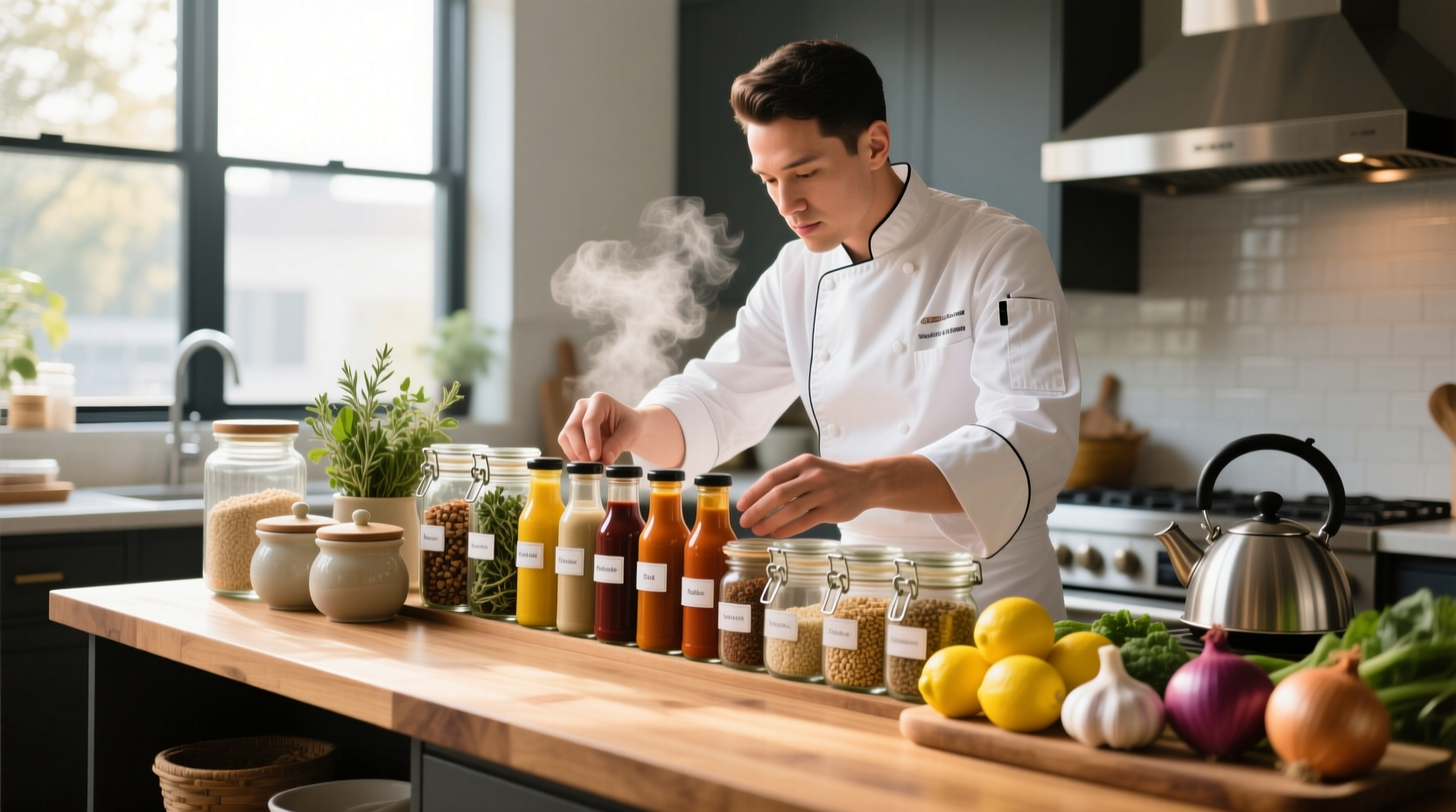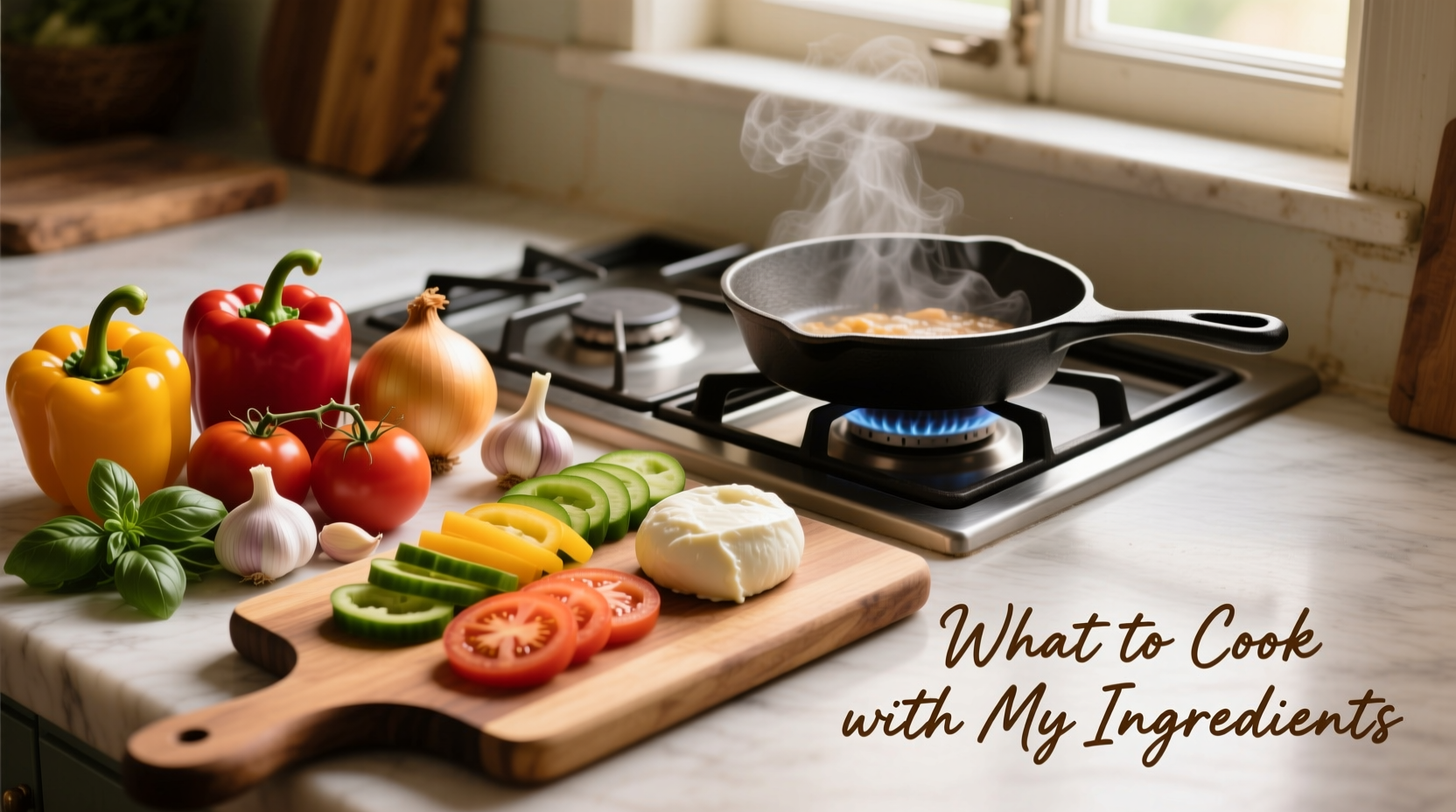When you're staring at your pantry wondering what to cook with my ingredients, the solution starts with three simple steps: 1) Inventory what you have 2) Identify your core proteins and starches 3) Apply basic flavor pairing principles. This guide provides immediate, practical solutions using what's already in your kitchen - no extra shopping required.
Ever opened your pantry and refrigerator feeling completely stuck about what to cook with my ingredients? You're not alone. According to the USDA, 30-40% of the food supply gets wasted annually, often because home cooks don't know how to transform basic pantry items into satisfying meals. The good news: with a systematic approach, you can create delicious dishes from whatever ingredients you currently have on hand.
The Pantry Assessment Method: Your First Step
Before you start searching for recipes, take 5 minutes to conduct a proper pantry assessment. This simple process reveals what you actually have available and prevents that frustrating moment when you realize halfway through a recipe that you're missing a critical ingredient.
Step 1: Categorize Your Ingredients
Group items into these essential categories:
- Proteins (canned beans, eggs, chicken, tofu)
- Starches (rice, pasta, potatoes, bread)
- Fats (oil, butter, nuts)
- Vegetables (fresh, frozen, canned)
- Flavor Enhancers (spices, vinegar, soy sauce)
Step 2: Check Freshness
Use the FDA's food date labeling guidelines to determine what's still usable. Many pantry staples last longer than you think - dried pasta maintains quality for 1-2 years past the "best by" date when stored properly.

Building Blocks: What to Cook with Common Pantry Staples
Once you've assessed your ingredients, focus on creating meals around your most abundant categories. Professional chefs use this same approach when designing menus based on seasonal availability.
Eggs & Dairy Solutions
When you're wondering what to cook with my ingredients and eggs are your main protein, try these chef-tested combinations:
- Egg + Starch + Acid: Fried rice with leftover rice, eggs, and rice vinegar
- Egg + Vegetable + Fat: Frittata with wilted greens and olive oil
- Egg + Starch + Vegetable: Strata with bread, eggs, and any vegetables
Canned Goods Creativity
Canned tomatoes, beans, and fish transform into complete meals with minimal additions. The key is understanding flavor layering:
| Base Ingredient | Essential Pairings | Complete Meal Example |
|---|---|---|
| Canned tomatoes | Garlic, olive oil, dried herbs | Pasta with tomato sauce (add any protein you have) |
| Chickpeas | Lemon, cumin, olive oil | Chickpea salad sandwich (mash with mayo substitute) |
| Tuna | Dijon mustard, celery, breadcrumbs | Tuna cakes (bind with egg if available) |
Flavor Pairing Principles for Limited Ingredients
Understanding basic flavor relationships helps you create balanced meals without following exact recipes. Culinary science shows certain ingredients naturally complement each other:
Acid Balance: When your dish tastes "flat," add acid (lemon juice, vinegar) to brighten flavors. This works especially well with bean-based dishes.
Fat Carries Flavor: Don't skip the oil or butter - fats help distribute flavors throughout your dish. If you're out of cooking oil, try using a small amount of nut butter thinned with water.
Salt Strategically: Add salt in stages, not all at once. Start with 1/4 teaspoon per serving, then adjust at the end. Remember that canned goods often contain significant sodium.
Adapting Recipes to Your Available Ingredients
When searching for what to cook with my ingredients, focus on adaptable frameworks rather than rigid recipes. Professional kitchens use these substitution guidelines:
- Grains: Rice, quinoa, couscous, and orzo can often substitute for each other in 1:1 ratios
- Proteins: Chickpeas work similarly to white beans; lentils can replace ground meat in many dishes
- Vegetables: Zucchini substitutes well for summer squash; kale works like spinach (use 1.5x amount)
- Liquid: Vegetable broth can be made from water + soy sauce (1 tbsp per cup)
According to research published in the Journal of Food Science, successful substitutions maintain similar moisture content and texture profiles. For example, applesauce works in baking because it matches the moisture level of eggs, not because of identical flavor.
Maximizing Limited Ingredients: Practical Tips
These professional chef techniques help you get the most from what you have:
Revive Wilted Produce: Soak limp vegetables in ice water for 15-30 minutes. The cold water rehydrates cells, making greens crisp again. This works particularly well for herbs, lettuce, and celery.
Create "Stock" from Scraps: Save vegetable trimmings (onion skins, carrot tops, celery leaves) in a freezer bag. When you have about 2 cups worth, simmer with water for 30 minutes to create instant vegetable stock.
Stretch Proteins: Combine small amounts of meat with plant proteins. A quarter-pound of ground meat mixed with one cup of cooked lentils creates a flavorful, textured filling for tacos or pasta sauce.
Common Ingredient Pairings Quick Reference
Keep this simple guide handy when deciding what to cook with my ingredients:
- Rice + Beans + Acid = Complete protein meal (add hot sauce if available)
- Pasta + Canned Tomatoes + Fat = Basic sauce foundation (add garlic powder if you have it)
- Eggs + Starch + Vegetable = Frittata or strata base
- Beans + Greens + Acid = Hearty soup or stew
Remember that the FDA recommends consuming cooked leftovers within 3-4 days for safety. When repurposing ingredients, always check for signs of spoilage like unusual odors, mold, or slimy textures.
When You're Truly Limited: The Emergency Meal Framework
When your pantry seems completely empty, focus on these three elements:
- Carbohydrate source (bread, rice, pasta, potatoes)
- Fat source (oil, butter, nuts, seeds)
- Flavor enhancer (salt, vinegar, hot sauce, spices)
Even with just these three components, you can create satisfying meals. Toss cooked pasta with olive oil, salt, and a splash of vinegar for instant aglio e olio. Fry stale bread in a little oil with salt for delicious panade. Mash potatoes with any available fat and acid for comforting mashed potatoes.
Building Your Flexible Pantry
Once you've mastered what to cook with my ingredients using what you have, consider building a more flexible pantry. The University of Massachusetts Amherst's nutrition department recommends keeping these versatile staples on hand:
- Dried beans (black, kidney, chickpeas)
- Canned tomatoes
- Rice or other grains
- Olive oil
- Vinegar (apple cider or white)
- Basic spices (salt, pepper, garlic powder, onion powder)
These items have long shelf lives and can combine in countless ways to create complete meals. With just these basics, you'll never again wonder what to cook with my ingredients when you're short on time or resources.











 浙公网安备
33010002000092号
浙公网安备
33010002000092号 浙B2-20120091-4
浙B2-20120091-4